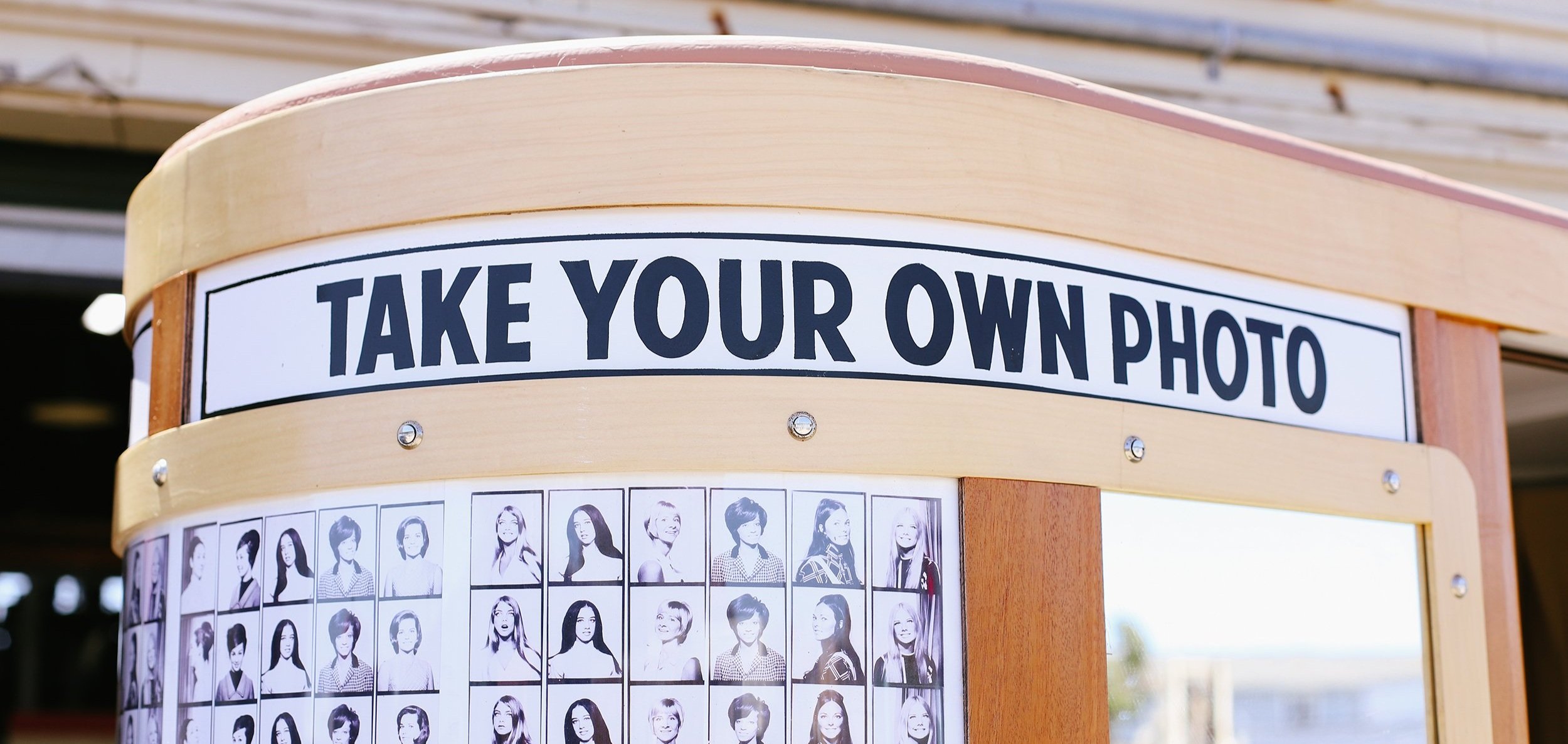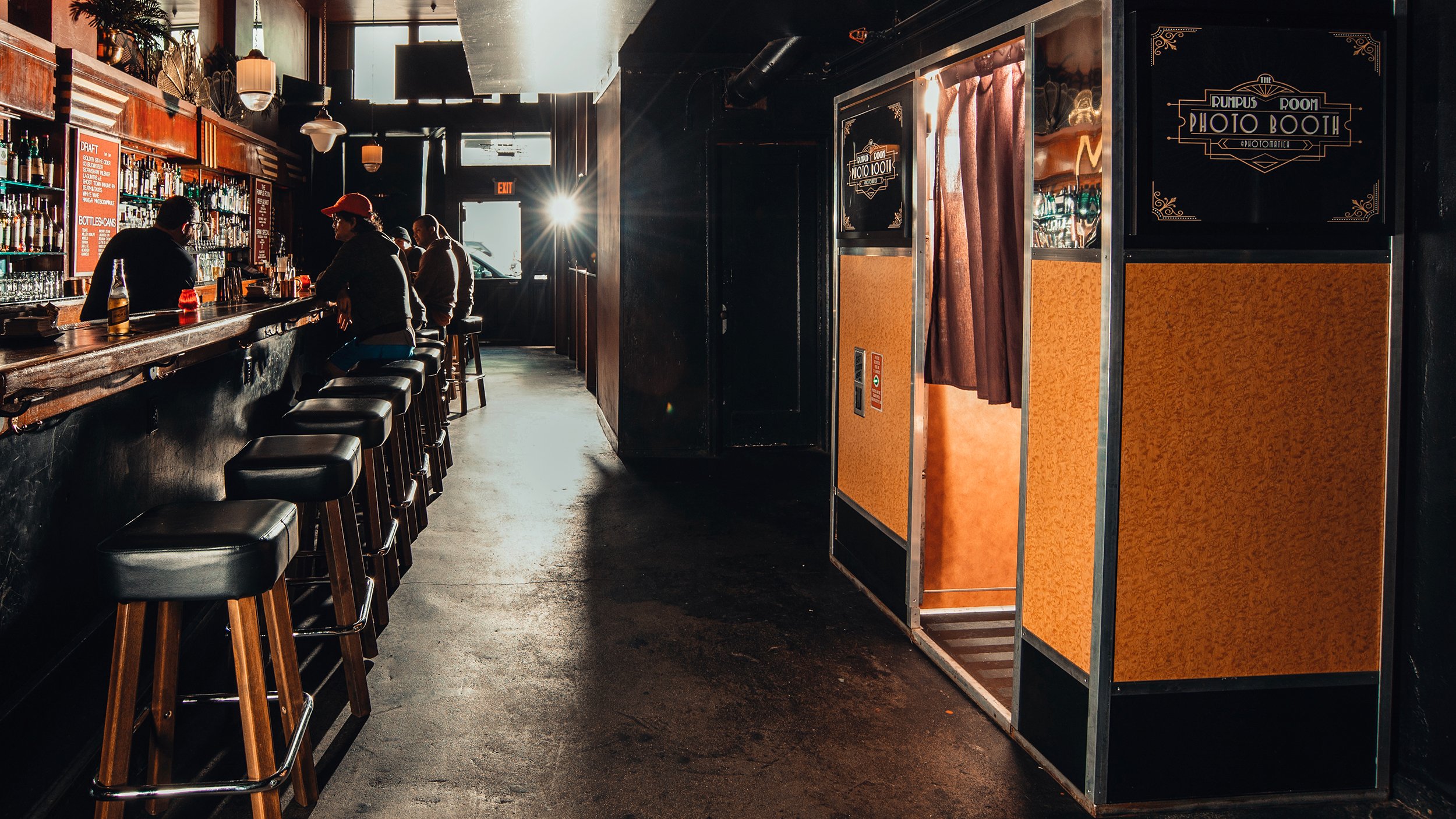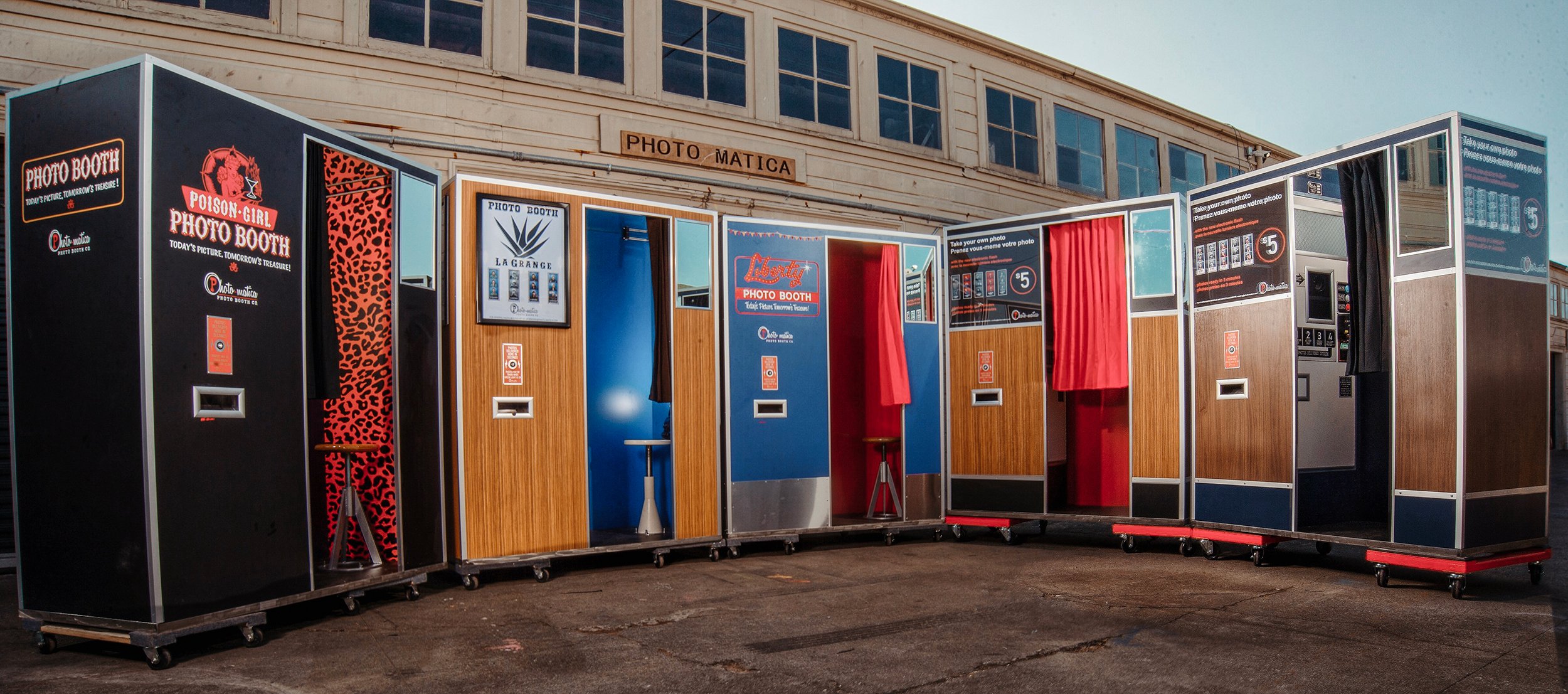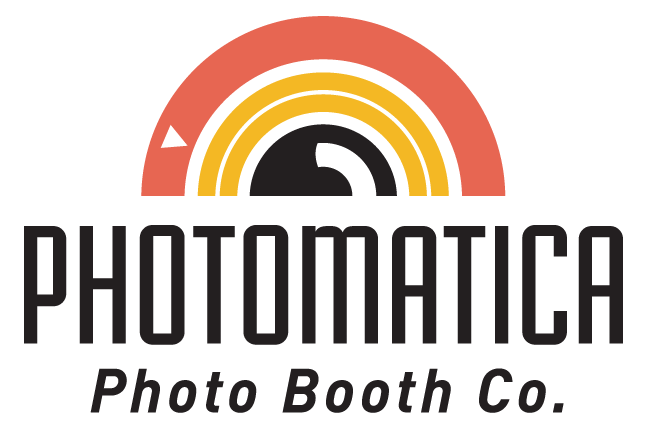
PHOTOMATICA’S COLLECTION OF
Analog Photo Booths
Check our authentic analog photo booths that you can rent out for productions below.
Due to their vintage nature, our analog booths are not available for private event rental (like weddings or parties).
In addition to offering our analog collection for prop rental, we craft two of our own vintage-inspired digital booths: the Photomatica Model 58 & Photomatica Model 67, both featuring metal signage, custom posters, and hand-painted painted wooden stools. If you want a custom-built photo booth in your bar or venue:
Auto-Photo
Model 9
The Model 9 was launched in the 1940’s by Los Angeles-based manufacturer Auto-Photo, and is one of the most distinct looking analog photo booths. Drawing on the aesthetics of the late art deco era, the Model 9 sports these instantly recognizable characteristics:
Curved cabinet
Curved custom trim
Floodlight flash system
Colorful, thick interior enamel coating
From the post-war 1940’s to the mid-1950’s, the Model 9 was the most commercially viable photo booth on the market. In comparison to earlier models (i.e. Mutoscope’s Photomatic), the Model 9 was both easy to use and maintain.
Photomatica has a number of Model 9’s in our collection; including the original woodgrain booth and a custom designed black booth with aluminum trim that previously lived in the old Rayko Photo Center of San Francisco.
Auto-Photo
Models 11 & 11C
In 1955, Auto-Photo released perhaps their most iconic machine, the Model 11. This was the booth that made it big—showing up everywhere from the county fair to the opening sequence of The Beatles’ A Hard Day’s Night (1964). The Model 11 stuck with a curved body design, but with upgraded materials and mechanics, such as:
Natural wood grain cabinet paneling
Teal-green seat, door and matching exterior panel
Aluminum metal banding
Strobe light flash system in favor of the antiquated flood lights.
The superior “spider” arm assembly.
Model 11
Model 11C
Model 11 Spider Arm Assembly
The development of the Model 11’s spider arm assembly revolutionized the efficiency of photo booths. Instead of developing one strip every two minutes, the machines could now process up to seven strips simultaneously. The Model 11 also found massive success due to its crisp image quality. The US and other governments began to accept photo booth pictures as valid ID and passport images with this model.
Auto-Photo capitalized on this by building barebone variations such as the Model 11A & 11C. These models were purely for identification purposes, and were marketed primarily to military bases and prisons.
Auto-Photo
Models 12 & 14
As the 1950s came to an end, Auto-Photo leaned heavily into mid-century modern aesthetics while designing their next booth, the Model 12. Released in 1958, it subverted expectations and made aesthetic upgrades and cost reduction changes such as:
A sturdier, boxy body design
Floating roof
Full-body wood grain walls
Open-air seating area
Back wall artwork highlighting the electronic speed light flash system
In 1964, the Model 14 was released with improved mechanics but few aesthetic changes. Due to the poor quality of the ply wood used, many Model 14s succumb to rot, though there are still few dozen worldwide that are publicly operable. Their big visual upgrade—a new winged roof—was ultimately a flop purely because of mobility issues. Can you spot the other design difference?
Want A Photo Booth In Your Venue?

Photo-Me
Models 17 & 17C
Photo-Me International, a British company that would eventually operate over 15,000 booths around the world, was responsible for the Model 17. This booth was not only a favorite of Clark Kent’s, but also the first model to sport Photo-Me’s “Made In England” signage.
As color film finally became commercially accessible to the public in the 1970s, photo booth paper followed suit. After reworking the mechanics to work with color chemicals, Photo-Me began to tack on a “C” to the name of some models to denote their newfound ability. The design of the Model 17C reflected this with eye-popping exteriors and features such as:
Brightly colored posters
A boxier shape with only one-sided entry
Interior wood grain panels
Instructional door graphics
The Model 17 & 17C were successful, but several factors such as the introduction of Polaroid cameras and several international government’s reversal on policy regarding the acceptance of photo-strip images as valid forms of identification led to a downturn in popularity for photo booths.
Photo-Me
Model 21C
This Model 21C is a machine from the 1980s that represents the beginning of the end for dip-n-dunk chemical photo booths. Although a few more analog models were produced beyond the M21, exterior designs had grown formulaic and no longer shifted to represent design trends between generations. However, the Model 21C sported a few attention-grabbing features:
Bold rainbow posters (to highlight its color capabilities)
Glowing color top signs
A second set of inlaid posters seemingly wrapped around the booth
The interior mechanics had only improved marginally over the past few decades, and consumer interest began to favor the shiny new bells and whistles that were featured in emerging digital-print booths of the early aughts. The transition to the easy-to-maintain digital-print booths would become the standard, despite the initial sub-par quality of the early digital technology. Around the same time, many chemical booths were recovered by the Canadian wing of Auto-Photo to be disassembled and used for parts—estimates report thousands of booths were scrapped by the brand.

Model 58
Photomatica
Models 58 & 67
While companies like Auto-Photo began to fade away, the spirit (and technology) of the analog era was kept alive by several small studios and a few devout fanatics. Shortly after the last analog photo booths were released in 2004, the number of photo booths out in the wild quickly dissipated.
Photomatica began collecting analog photo booths to help preserve this corner of photographic history, and this collection served as inspiration for crafting our own updated iterations, the Model 58 and Model 67.
Our digital-print Model 58 combines the mid-century aesthetics of the Auto-Photo Model 12 with today’s tech to produce a studio-quality, gimmick-free photostrip. It’s open-air seating area allows multiple people to cram in and makes it a favorite at high capacity locations. Almost everything about this vintage-inspired photo booth is customizable, from large design elements like back wall image wraps down to small details like the color of its curtain rod.
Similarly, our digital-print Model 67 builds upon the sturdy, stoic design of the Photo-Me Model 17 to create an enclosed option that feels at home at a local dive bar or lobby of a five-star hotel. The Model 67 is a favorite among those looking for the most private photo booth experience. Its customization options, such as elongated exterior posters or even hand-painted artwork, allow for unique, eye-catching branding on each wall.
Model 67
If you’re interested in getting a photo booth for your venue* or using a piece of our analog collection for production purposes, please reach out to us through the contact form below.
*Please note that permanent analog installations are done only on an approval basis.
Contact Us
Information for this webpage was sourced in part from Meagz Fitzgerald’s book Photobooth: A Biography, PhotoBooth.net, and Mark Bloch’s blog Behind the Curtain: A History of the Photobooth in combination with our own experience and findings over the past decade.











































